A bottle of cloud
Make a cloud in a bottle to see how clouds form.
Materials:
- Clear plastic soft drink bottle
- Water
- Matches
One of the challenges when simulating the weather in a climate model is getting the clouds right. Clouds influence the temperature on the ground, and the formation of clouds depends on a few key ingredients. But the science of clouds is well understood, and can be demonstrated by a simple experiment.
Remove the label from a large, clear plastic soft drink bottle. Pour a small amount of cold water into the bottle. Screw on the cap and shake the bottle. Squeeze and release the bottle a few times. Nothing happens, as not all the ingredients are there.
Next, open the bottle and drop a lit match into it (the match will go out when it hits the water). Screw on the cap, squeeze the bottle and then again shake it. The bottle will appear to fill up with smoke. But squeeze and release the bottle again a few times, and it will become clear that it is not smoke, but fog (or a cloud in a bottle).
Releasing the squeezed bottle increases the volume inside; this decreases the pressure, which decreases the temperature inside the bottle. When water condenses, the droplets may form clouds. Particles in the air help the droplets form. In fact, without tiny particles in the air, clouds would not form at all. Here, the drops form on the smoke particles.
This activity shows the ingredients for a cloud include water vapour in the air, a drop in temperature, and a surface on which to form. It also demonstrates that high pressure (squeezing the bottle) leads to clear skies and low pressure (releasing the bottle) leads to cloudy skies. Importantly, it shows that the addition of small pollutants to the atmosphere can have an impact on the formation of clouds, and hence the climate.
Questions:
1. What are three conditions required for a cloud to form?
2. List three causes for a drop in temperature in the atmosphere.
3. Conduct some online research to find out how climate change affects cloud formation.
A bottle of greenhouse
See how carbon dioxide absorbs heat and increases the air temperature.
Materials:
- 2 thermometers
- 2 large plastic drink bottles
- Baking soda
- Vinegar
- Tablespoon, funnel, measuring cup
- Heat-emitting lamp
Allow two thermometers to reach room temperature. Measure the air temperature and make a note of each recording.
Place one thermometer in a 1.25 litre plastic bottle. Place the other thermometer in another 1.25 litre plastic bottle – for this one, use a funnel to add two tablespoons of baking soda and 60 ml of vinegar.
Place a powerful lamp, such as a sun lamp or a lamp with an old fashioned globe that emits heat a few centimetres away from the bottles, at an equal distance.
After a few minutes, check the temperature of each bottle.
The lamps represent the Sun heating the Earth. The baking soda and vinegar react to form bubbles of carbon dioxide, so this bottle represents the Earth’s atmosphere with a greenhouse effect. The carbon dioxide is about 50 per cent more dense than air, so it will stay in the bottle. The temperature of the bottle containing carbon dioxide should be warmer, as the carbon dioxide absorbs heat. The empty bottle does not have any carbon dioxide (other than the small amount in the air), so the heat escapes.
Questions:
1. What is the difference in temperature between the two bottles?
2. What is the reason for the temperature difference?
3. Conduct online research to find the approximate concentration of carbon dioxide in the Earth’s atmosphere today. Has this concentration changed over time?
4. What do you think are the main impacts of a warmer climate on the ACT? What are the impacts on people? What are the impacts on the environment?
A bowl of sea-level rise
The world’s sea level (or height of the Earth’s seas and oceans) has risen by about 20 cm in the past 100 years. It continues to rise, and has been rising even faster in recent years. This may make living by the coast and on small islands impossible in the future.
Global warming and melting ice cause the sea level to rise. But what type of ice? Is it the ice from mountains and on land, or the ice from icebergs floating in the sea? Let’s find out.
Experiment 1: Investigate whether icebergs contribute to sea-level rise
Materials:
- Bowl of water
- Ice cubes
- Pen
To get an idea of the effect of melting ice on the rise in sea level, add water to a bowl until it is about a half full (if you don’t have a bowl, you can use a glass). Then add 10 ice cubes, or just enough to make the water rise nearly to the top of the bowl (try not to spill any water – it might be a good idea to do this in the sink). Take a note of where the water level is (you can mark the bowl with a pen) then leave the bowl of water and ice until all the ice is melted.
Did the melting ice cause the water level to rise? Or did it stay the same?
Experiment 2: Does melting ice on land make the sea level rise?
Materials:
- Bowl of water
- Ice cubes or ice block
- Mug
- Pen
Place a mug upside down into a bowl. Using the pen, draw a line about hallway up the inside of the bowl. Fill the bowl with water until it reaches the line you have drawn. Balance around 10 (or as many as you can) ice cubes on the top of the upturned mug. You can also use one larger piece of ice that can be balanced on the mug.
Check back on the experiment once the ice has melted. What happened to the height of the water in the bowl? Is the water level now higher or lower than the line you drew on the bowl?
What has happened?
In experiment 1, the level should have stayed the same, so the water shouldn’t have overflowed. When ice in water melts, it merely changes form – from solid water to liquid water: the ice displaces the water so, when it melts, the resulting water fills the space formerly taken up by the ice.
In experiment 2, the water level should have risen. This is because the melted ice has increased the amount of water in the bowl.
Frozen water that floats, such as icebergs in the Arctic region, would not alter sea level if it were to melt. The ice sheets of Antarctica and Greenland contain huge amounts of frozen water, most of which lies above land. So, if that melted it would run into the oceans, raising global sea level.
While a total loss of polar ice is not remotely expected, melting of the land-based Greenland ice sheet would raise sea levels by almost seven metres, while a collapse of the West Antarctic ice sheet could raise sea level by between four and six metres. For this to occur, global average temperatures would need to rise by between 2 and 4 °C, but the melting would take many centuries.
Sea level is also rising as our oceans get warmer, because water expands as it warms. About a third of the observed rise in sea level is due to ocean warming, because as water warms it expands in volume. The rest is due to melting land ice and changes in the amount of water stored on the land. Just as your melting ice cubes didn’t cause the glass of water to overflow, none of the rise in sea level is due to melting icebergs.
Questions:
1. Why did the positioning of the ice in the experiment influence changes in the level of the water in the bowl?
2. What are three causes of sea-level rise in the oceans?
3. What do you think are the main impacts of a sea-level rise? What are the impacts on people? What are the impacts on the environment?


